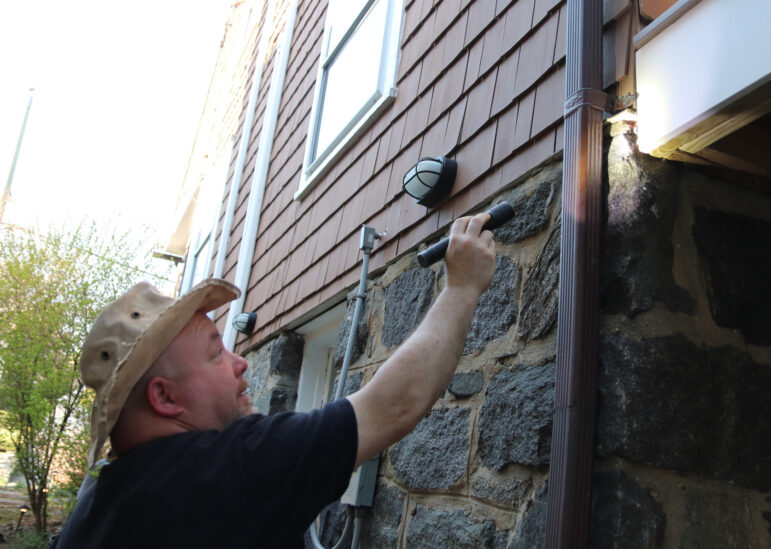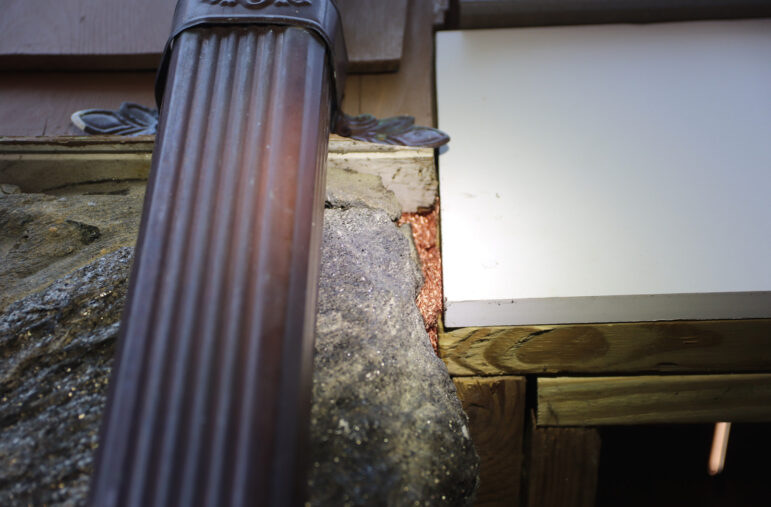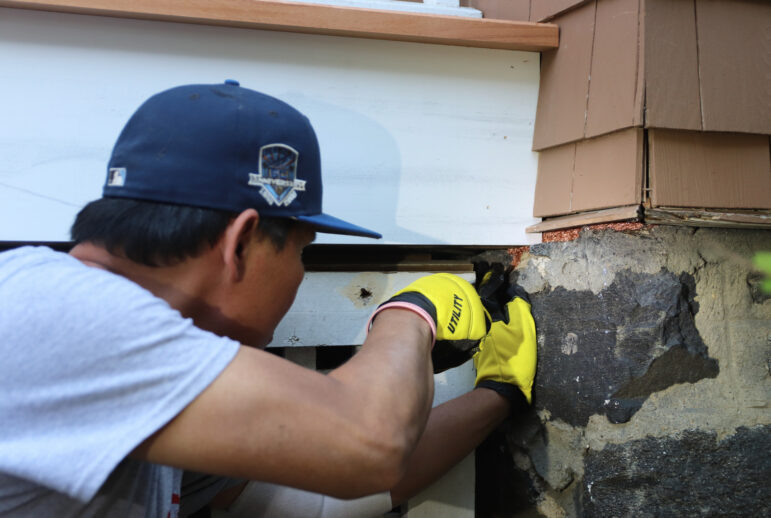While a new “rat czar” in New York City is garnering headlines, rats make Greenwich their home too. Why wouldn’t they? We are a shoreline community, and rats are attracted to water. And like NYC, where rats proliferated along with outdoor dining sheds during the pandemic, Greenwich Avenue also became a popular destination for outdoor dining.
This month begins the outdoor dining season in Greenwich, albeit with a strict new P&Z regulation intended to enforce cleanliness, along with ADA compliance, sidewalk access and ban on amplified music.
But the party carries on, and the rats are already here.
For many homeowners, the exterminator with his poison is a regular visitor. The problem is that infestations return if access points to a house aren’t sealed.
There is a unique pest control service who stays very busy in Greenwich helping homeowners who find themselves with rats, mice, bats, or flying squirrels.
This week we met the founder of Thoroughspect, Brian Sweig, whose alternative approach does just that.
Mr. Sweig has been sealing homes to keep out critters and lower the amount of insects in houses since 1998. He named his company Thoroughspect because his first step is always a thorough inspection to locate all potential access points.
He arrives in an unmarked truck, which he says his customers prefer.


“Critters just want a safe place like the rest of us,” Sweig explained. “When you seal the exterior of your home correctly, they simply go live somewhere else.”
There are several reasons it’s important not to ignore an infestation, starting with disease.
Mice, rats, or squirrels make crawl spaces or attics their home while germinating several infectious bacteria and parasites. Their droppings, urine or saliva can be hazardous when coming in contact with humans through direct touch, dust or even contaminated particulate in the HVAC.
Eww.
And, when a house is infested with rodents there is the risk of being bitten.
But more typically, mice and rats will cause damage to wiring, insulation, drywall and wood inside the home.
This week, Sweig visited a house in a central Greenwich neighborhood where a colony of Norway rats have made their presence known.
“Norways are the worst of all rats. They are aggressive. They will bite. They can attack. They colonize and destroy all types of things,” Sweig said, looking at a series of rat holes along the sidewalk. “I can tell they are Norways by the size of the holes. A mouse makes a hole only about the size of a mouse because he doesn’t want to be preyed upon. With Norway rats, once they dig that hole, they’re not afraid.”
Sweig said rats are very smart.
“What people don’t understand is if you have rats inside your house, if you go to set a snap trap, your chances of catching an adult rat are slim to none. They will literally force a juvenile rat onto death on the trap and then eat half the rat and walk away. I’ve caught many half-rats, half-mice, half-shrews, and half-snakes because rats are omnivorous. They will eat anything.”
Sweig said people make rats ‘trap-shy,’ meaning they teach the rat that the trap is going to kill.
“So, you put traps in, but not to kill. You don’t set the traps. You just feed them until they start to accept the food off the snap traps. Then you use gloves and keep re-baiting the traps. Bacon works very well. Also, sausage or ham. And remember, if they’re inside your house and you have a dog or cat, they probably already have 40 pounds of dog or cat food stuck in a wall somewhere.”
“So, once the rats start to accept the food, that is when you set the traps to kill. First you get them to trust,” Sweig added.
Thoroughspect uses mechanical snap traps. That way they know where something died and whether it’s adult or young to determine whether the breeding cycle is broken.
“We use the plastic traps because they don’t hold as much bacteria and they don’t get flimsy or rock because of moisture. Whereas the balsa ones, once they get a little moisture on them, they are easy for the animal to steal the bait.”
Sweig recommends recessed bait cups made by Kness.
“We’ve used over 10,000 of these traps in our career,” he said.
Sweig said that with 97% of structures he seals he never has to return to after the two-week trap out period.



As for sealing crevices and openings that critters use to get inside a house, Thoroughspect has their own custom-made metal mesh.
“Ours is 19-gauge, quarter inch. You can’t even fit a pencil through it,” he said. “Everything is backed by metal. Even if we have to use concrete in your foundation, we’re going to use metal so the concrete has something to adhere to.”
“We don’t just get rid of rodents. We fix houses,” Sweig added.
For Sweig, every job starts with a phone call or email.
From there he arranges a visit to do an assessment, taking pictures of potential entry points from roof to foundation that he spots with his trained eye.
Afterward he sends annotated high-resolution photos by email with a report and estimate.
In addition to Thoroughspect, Sweig, who is a licensed home inspector in CT and NY, has two related businesses: a home inspection company called Fault Finders Inc and a mold assessment business called My Mold Finder Inc.
Sweig said that 99% of his home inspection business comes from Thoroughspect clients.
A plus is that when he assesses a house for access points, Sweig will flag other issues and deficiencies that a “check the box” pest inspector might miss.
After they seal every crevice, they place traps for any remaining rodents and return a few days later to check on the traps.
If the issue is bats, the approach is slightly different.
Bats in themselves are harmless, intelligent, and gentle creatures. They eat a lot of bugs which makes them good pest exterminators themselves. But you still don’t want them in your home.
Bats can expose humans and animals to potentially life-threatening diseases, including rabies. Also, bat droppings, known as guano, can also be extremely dangerous to humans and pets.
If there are bats, Thoroughspect will seal the house but use one-way exit tubes for bats to leave in season according to Ethical Bat Standards.
Contact information for Brian Sweig’s Thoroughspect:
Connecticut: 203-800-3887
New York (914) 755-5633
Or email Sweig at [email protected]